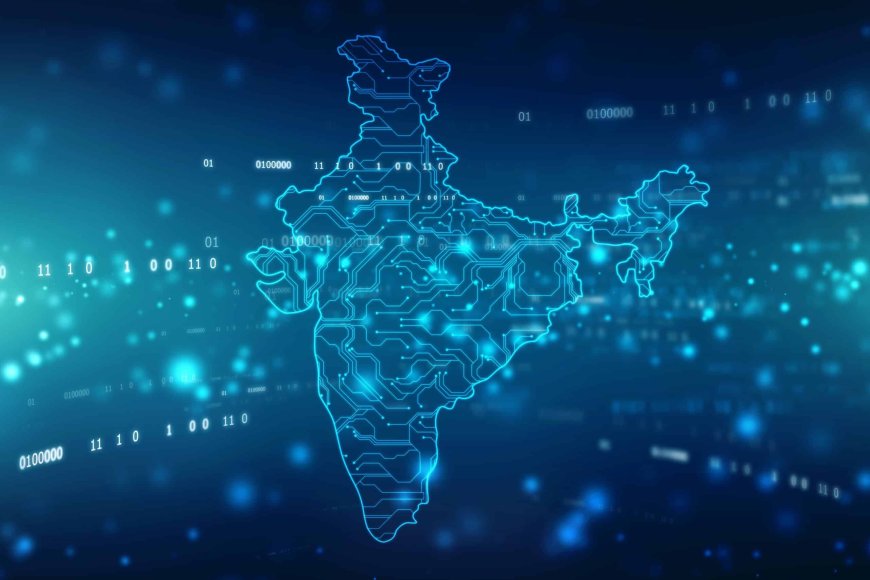India’s Digital Revolution: How Technology is Reshaping Everyday Life
Discover how India’s digital transformation is reshaping fintech, AI, 5G, e-governance, and education, driving the nation toward a tech-driven future.

The Changing Face of India in the Digital Era
Over the past decade, India has witnessed an unprecedented digital transformation. From UPI payments revolutionizing transactions to AI-driven advancements shaping industries, technology is now at the heart of India’s growth story. As the world's most populous nation embraces a digital-first approach, its impact is being felt across education, healthcare, business, and governance.
With over 900 million internet users and growing, India is not just consuming technology—it is shaping the future of it. But what does this digital revolution mean for the common citizen? Let’s dive into the impact and future of India’s technological rise.
1. The Fintech Boom: Cashless Economy on the Rise
Gone are the days of long bank queues. UPI (Unified Payments Interface) has made instant money transfers a reality, with India leading the world in digital payments. In 2023 alone, India recorded over 100 billion UPI transactions, proving that mobile-based transactions are the new normal.
-
QR codes and mobile wallets have made street vendors and small businesses digital-ready.
-
Fintech startups like PhonePe, Paytm, and Google Pay are driving financial inclusion.
-
The government’s Digital India initiative is pushing for 100% digital transactions in rural areas.
India’s fintech boom is not just about convenience—it’s about financial empowerment at every level of society.
2. AI and Automation: The Next Industrial Revolution
Artificial Intelligence is reshaping industries, from healthcare to agriculture. Indian startups and tech giants are leveraging AI to solve real-world problems.
-
Healthcare: AI-powered diagnostics are improving early disease detection, reducing costs, and making healthcare accessible in remote areas.
-
Agriculture: AI-driven analytics are helping farmers predict weather patterns, optimize irrigation, and increase crop yields.
-
E-commerce: Personalized shopping experiences and chatbots powered by AI are enhancing customer engagement.
With India emerging as a global AI innovation hub, the government is now focusing on AI regulations and ethics to ensure responsible technology use.
3. The Rise of 5G: Transforming Connectivity in India
With 5G networks rolling out across major cities, India is entering a new era of hyper-connectivity. Faster internet speeds, lower latency, and improved network efficiency are opening doors for:
-
Smart cities with real-time traffic management
-
Enhanced remote work and education opportunities
-
Advanced healthcare solutions like telemedicine and robotic surgeries
Telecom giants Reliance Jio, Airtel, and Vodafone-Idea are racing to make 5G accessible across urban and rural India, ensuring that digital connectivity reaches every corner of the country.
4. E-Governance: A Transparent and Efficient Future
The Indian government’s Digital India mission is making governance more accessible, transparent, and efficient. Platforms like:
-
DigiLocker – Paperless document storage for citizens
-
UMANG – A single app for accessing government services
-
Aadhaar-based verification – Reducing bureaucratic delays
These initiatives are cutting red tape and making government services citizen-friendly, proving that technology is the key to a more accountable administration.
5. The EdTech Revolution: India’s Future Workforce Goes Digital
Online learning platforms like Byju’s, Unacademy, and Vedantu have made quality education accessible beyond metros. With digital classrooms and AI-driven personalized learning, students from all backgrounds can now:
-
Access affordable education from top institutions.
-
Learn at their own pace through interactive courses.
-
Get job-ready skills in coding, AI, and data science.
India’s EdTech boom is not just changing education—it is shaping the future workforce.
Challenges of Digital Growth in India
While India's digital revolution is impressive, it also presents challenges:
-
Cybersecurity Threats – Rising digital transactions mean a higher risk of online fraud and data breaches.
-
Digital Divide – Rural connectivity and digital literacy remain concerns.
-
Data Privacy Issues – With increased surveillance, the need for strict data protection laws is crucial.
The government and tech companies must work together to bridge the digital divide and ensure cyber safety for all users.
The Future: Where is India Headed?
India’s digital transformation is unstoppable. With continued investments in AI, fintech, and 5G, the country is set to become a global technology powerhouse. The key to sustained growth lies in ensuring inclusivity, cybersecurity, and responsible innovation.
As India steps into the future, one thing is certain—technology will not just be a tool; it will be the foundation of progress.
What's Your Reaction?
 Like
0
Like
0
 Dislike
0
Dislike
0
 Love
0
Love
0
 Funny
0
Funny
0
 Angry
0
Angry
0
 Sad
0
Sad
0
 Wow
0
Wow
0



















































